- News
- Reviews
- Bikes
- Components
- Bar tape & grips
- Bottom brackets
- Brake & gear cables
- Brake & STI levers
- Brake pads & spares
- Brakes
- Cassettes & freewheels
- Chains
- Chainsets & chainrings
- Derailleurs - front
- Derailleurs - rear
- Forks
- Gear levers & shifters
- Groupsets
- Handlebars & extensions
- Headsets
- Hubs
- Inner tubes
- Pedals
- Quick releases & skewers
- Saddles
- Seatposts
- Stems
- Wheels
- Tyres
- Tubeless valves
- Accessories
- Accessories - misc
- Computer mounts
- Bags
- Bar ends
- Bike bags & cases
- Bottle cages
- Bottles
- Cameras
- Car racks
- Child seats
- Computers
- Glasses
- GPS units
- Helmets
- Lights - front
- Lights - rear
- Lights - sets
- Locks
- Mirrors
- Mudguards
- Racks
- Pumps & CO2 inflators
- Puncture kits
- Reflectives
- Smart watches
- Stands and racks
- Trailers
- Clothing
- Health, fitness and nutrition
- Tools and workshop
- Miscellaneous
- Buyers Guides
- Features
- Forum
- Recommends
- Podcast
feature
 Tour de France bike vs what you can buy lead
Tour de France bike vs what you can buy leadTour de France bikes vs the bikes you can buy in the shops — are they actually the same?
You may have heard that professional road cyclists use extra special bikes, and you may be wondering what exactly they are getting that you aren't. Let's have a look at what sets pro bikes apart from the ones you can buy at your local bike shop, what makes them so eye-wateringly expensive, and finish off with some tips and tricks on how to emulate the pros.
An appealing part of professional cycling is that you can walk into a bike shop and ride away on a road bike very similar to the ones ridden by the likes of Wout van Aert and Tadej Pogačar.
Broadly speaking, the answer to the question of whether pro bikes are the same as the ones that you or I can buy in the shops is: yes. All you have to do is spend a lot of money - pretty much north of £10,000 nowadays - and you'll be presented with something very similar to the ones being raced around France.
But, let's take a look at what makes these bikes different to the ones ridden by the pros. It's not a case of saying that these bikes will be identical; there may be similarities in terms of the brand and model, but the pros often have custom-built or specifically modified bikes that cater to their needs and preferences.
Nothing is as simple as yes or no, so let’s dive a little bit deeper and look at the individual parts that make up a pro bike. There are plenty of tips we can take away, too...
Frame
> The bikes of the Tour de France
The main component of any bike is the frameset, and the top-end models you'll see in bike shops are always the same as the ones that the pros are riding, unless its a bike that is yet to be officially released.
Pro bikes have the lightest, stiffest versions of those frames, and they often have them well ahead of general sale, with the Tour de France being a showground for many new bikes.
Even if you can't have it right at the moment you see it in the Tour, you should eventually be able to get your hands on a frame that's the same as your favourite riders. That's because anything used in the Tour de France must be released to the public sooner or later, as per UCI rules.
Paint job
One area where pro frames may differ from those you can buy is in the paint. Professional cyclists often have custom paint jobs unique to them or their team, and the Tour de France showcases many new limited edition designs for the occasion.
For example, although you can buy the same Cervelo S5 aero road bike as Van Aert, you may have to leave the Jumbo-Visma paint job behind, unless you get your hands on one at an end-of-season auction for a sizeable fee.
You can, however, get Mark Cavendish's custom paint job on a Wilier Filante SLR, but this will cost you an additional €2,000 on top of the starting price of £9,710.
Every gram counts in professional cycling, so manufacturers go to great lengths to reduce weight wherever possible, including in the paint. The paint is often lighter, as standard paint can add 100 grams or more. In a Grand Tour, this weight is better utilised for other areas, such as aerodynamics, rather than in the paint.
Yann Le Fraillec, the Chief Product Officer at Van Rysel says: "The paint is very important when you buy your bike.
"Sometimes it's not understood by customers why we decide to have a raw frame on the RCR, because when you purchase the white one, you sometimes have almost a 100g gap.
"So, for the RCR Pro, the design was to be the lightest possible. So, this is the main difference, just the paint".
Geometry
Despite being able to get your hands on a frame that's the same as your favourite rider's, there have been some instances where riders have requested their sponsors make one-off bikes with special geometry just for them.
That list includes names like Fabian Cancellara and Peter Sagan, who both previously had custom-made versions of their team’s race bike because they didn’t like the geometry (the frame’s measurements) of the standard issue bike.
When you're one of the biggest names in the men's professional peloton, you can request things like that. But on the whole, pro riders generally ride the same frames that you can buy.
Bike position
This isn’t strictly a difference between shop bikes and pro bikes, as you can set your bike up in any way that you choose; but professional cyclists often have more aggressive positions. The number of pro riders with long, low and narrow positions is greater than you’d see on the average club ride.
The bikes in a shop will be set up differently for one key reason, and that is comfort. Generally, they will feature a wider and higher handlebar position that is also closer to the saddle. This will often be more comfortable for the average person who is buying the bike.
Pro riders have access to regular bike fittings to ensure an ideal fit and to maximise their efficiency and comfort, while also stretching every day to keep them comfortable in what can look like back-breaking positions.
They may also have personalised adjustments to their handlebars, stem, saddle, and pedals based on their riding style and body proportions.
A good shop will always adjust the position for you, so you can replicate those super-low racer positions if you want.
Components
One significant difference between the bikes available in bike shops and those seen in the Tour de France is the flexibility in component selection. We can mix and match components, wheels, and tyres to suit our preferences, whereas professional cyclists are required to use the equipment provided by their team's sponsors.
There are occasions when riders discreetly use equipment from other brands and cover up the logos, but generally, they adhere to their team's sponsors. For example, Ineos Grenadiers have been known to use Lightweight carbon fibre wheels instead of Dura-Ace wheels.
Groupsets
As with bike frames, there's rarely any groupset component on display that you won’t find on high-end bikes in your local bike shop. Although, pro riders often have access to the latest and most advanced versions of these groupsets, before they are made available to us.
The choice of groupset depends primarily on team sponsorship, and of the 18 WorldTour men's teams, 14 use Shimano groupsets and four are on SRAM. No WorldTour teams are currently using Campagnolo groupsets for the first time in over 70 years.
You might find the odd pro bike sporting a power meter that isn't sponsor-correct, but the electronic shifting provided by the main three groupset manufacturers is so good that we rarely see anyone stray from their sponsor products.
Riders may also opt for swapping out the standard outer ring for one with more teeth, particularly if a stage is set to end in a fast sprint or in a flat time trial stage, or ditch the outer ring altogether, switching to a single chainring setup.
The shifters are an area where pro bikes may differ from one you can get off the shelf, but it doesn't mean you can't make the same modifications. Back in 2019, we did see some of the SRAM-sponsored Trek-Segafredo riders using Shimano’s Di2 sprint shifters instead of the SRAM Blips.
These modified satellite shifter buttons allow riders to shift gears when resting their hands on the tops of the bars, and you can certainly buy these special shifters with your new bike. We'd recommend asking the mechanic if they could fit them for you, though.
Wheels
Many of the bikes in your local bike shop are likely to come with more affordable aluminium wheels, whereas you won't find stock aluminium wheelsets anywhere near a pro bike.
Carbon fibre wheels are the only option for the pros because they offer superior performance. They are often lighter, more aerodynamic and stiffer, all of which contribute to increased speed.
While the wheel choice of the teams comes largely down to the sponsors, it's not uncommon to see non-sponsor wheels used. As we've already mentioned, Ineos have used wheels from boutique German brand Lightweight in the mountains, while Aerocoach wheels often featuring in time trials. In 2023, we also saw some Astana Qazaqstan riders using Hed wheels instead of their sponsor-correct Corima ones.
Tyres
As with most other parts of a bike mentioned here, unreleased tyres are often found on the pros' bikes before they are available to the public. For example, we saw many riders on Vittoria's Corsa Pro tyres before they were released.
These prototype tyres are typically tested and refined during races to gather performance data and feedback from top cyclists before being launched onto the market.
Weight
> 8 upgrades to make your road bike better than a new one
Professional cyclists have to adhere to the UCI (Union Cycliste Internationale) weight limit regulations, which is currently a minimum of 6.8kg for UCI-sanctioned events. As a result, pro bikes are often built to just meet or slightly exceed this weight limit.
On the other hand, for those of us not constrained by UCI regulations, there's greater flexibility in bike weight and you have the opportunity to explore lighter bike configurations than the pros, which is particularly advantageous if you enjoy hill climbing or just want the lightest bike on the group ride.
Some tips and tricks to get a 'pro' bike
Electrical tape is your best friend
A team's mechanic will always have electrical tape to hand, and it can be very useful for stopping rattles and unwanted movement. For example, riders will use tape inside their computer mounts to stop their bike computer from going walkies.
The pro team mechanics will also put bar tape on the riders' pedals to stop any unwanted movement. Both are neat tricks that you can employ yourself.
Bike too light? Use aluminium parts
As mentioned above, the UCI enforces a 6.8kg minimum weight limit for bikes at UCI-sanctioned events.
If a pro bike is a bit too light, riders will often opt for an aluminium handlebar or stem to bring the weight up. These are also less likely to snap when there is a pile-up... and there are lots of pile-ups in the Tour de France.
The versatile Sharpie
Aside from signing autographs, looking closely at some pro bikes - especially the tyres and saddles - you'll see that a whole load of fun has been had with a Sharpie permanent marker.
If a rider doesn’t like the sponsor’s saddle and they’re an important rider, then they will sometimes just use their preferred perch and scribble out the logo. Tyres are a big culprit for this too.
Sponsorship logos... everywhere
While paint jobs on pro bikes aren't always as distinctive anymore, the sponsors of the jersey, groupset, wheels, power meter, brake pads and even the team owner's family plumbing business get their logo somewhere on the bike.
Pro bikes often start with the same design that you can buy in the bike shop, but can end up looking a bit of a mess after the sponsors have got to work.
So, to summarise, brands want pros riding and winning on their bikes to make them more appealing to consumers, and this means many manufacturers offer versions of professional bikes for sale to the general public. They are inspired by their professional counterparts, but may have slight modifications to suit recreational riders.
While you may not be riding an exact replica of a professional cyclist's bike, you can get pretty close.
Which pro team bike would you most like to buy? Let us know in the comments section below.
Emily is our track and road racing specialist, having represented Great Britain at the World and European Track Championships. With a National Title up her sleeve, Emily has just completed her Master’s in Sports Psychology at Loughborough University where she raced for Elite Development Team, Loughborough Lightning.
Emily is our go-to for all things training and when not riding or racing bikes, you can find her online shopping or booking flights…the rest of the office is now considering painting their nails to see if that’s the secret to going fast…
Latest Comments
- Rendel Harris 3 sec ago
Genuinely puzzled as to how you've extrapolated that from what I said. Care to explain?
- Rendel Harris 5 min 22 sec ago
If we can't have a debate over whether TNT shouldn't be allowed to take over cycling coverage and charge five times more for it, can we have a...
- chrisonabike 1 hour 43 min ago
The issue is we just end up with wider vehicles parked on the road because they won't fit the garage *, and it being more likely that drivers will...
- Pub bike 2 hours 10 min ago
He is up against the global trading system, which has obviously been in the news a lot lately. Framebuilders in other countries can undercut him,...
- David9694 3 hours 43 min ago
Stouport residents bemoan huge traffic queues through town...
- rookybiker 14 hours 37 min ago
The trailer seems to connect to both ends of the rear axle. Can it do tight corners without dragging the tyre sideways?
- froze 14 hours 40 min ago
Motorists have always been unkind to cyclists, but distracted driving is adding to the problem....
- Destroyer666 15 hours 34 min ago
Have you owned Bont shoes? In my experience even the widest Lake shoes have had a bizarre form of narrowing way too much in the toe area. But the...
- froze 16 hours 1 min ago
Not sure if this is possible, but this news letter goes out all over the world, and some places like Decathlon does not send stuff to America, in...
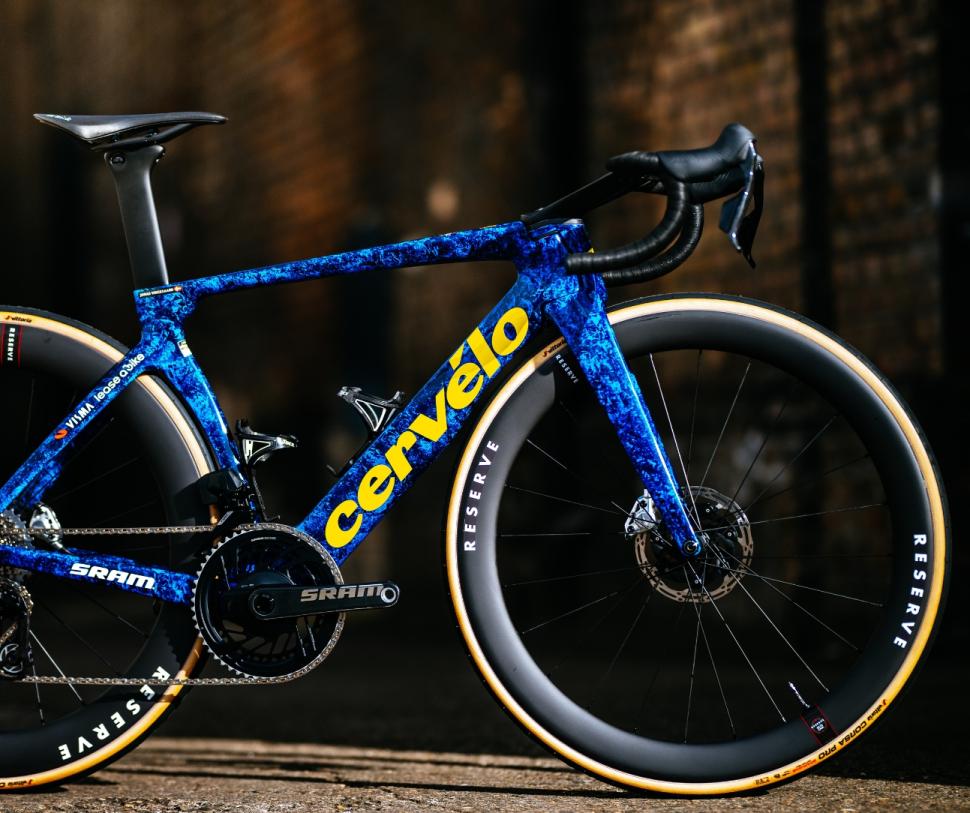
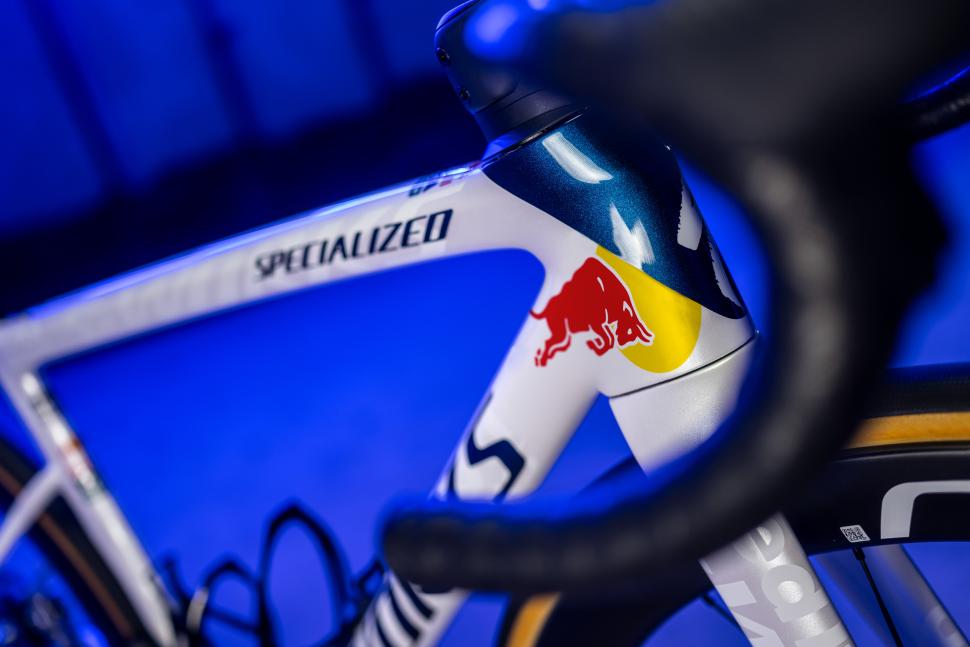
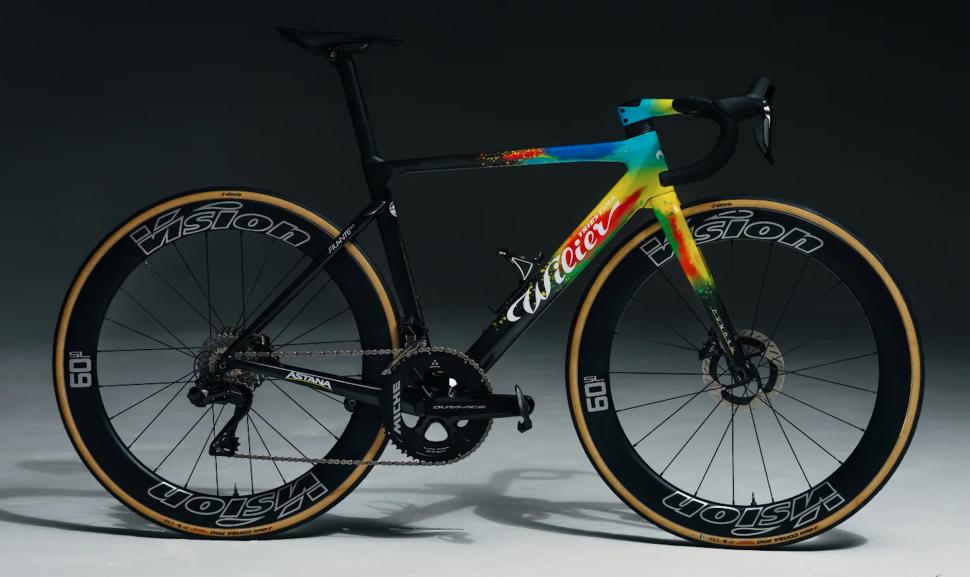

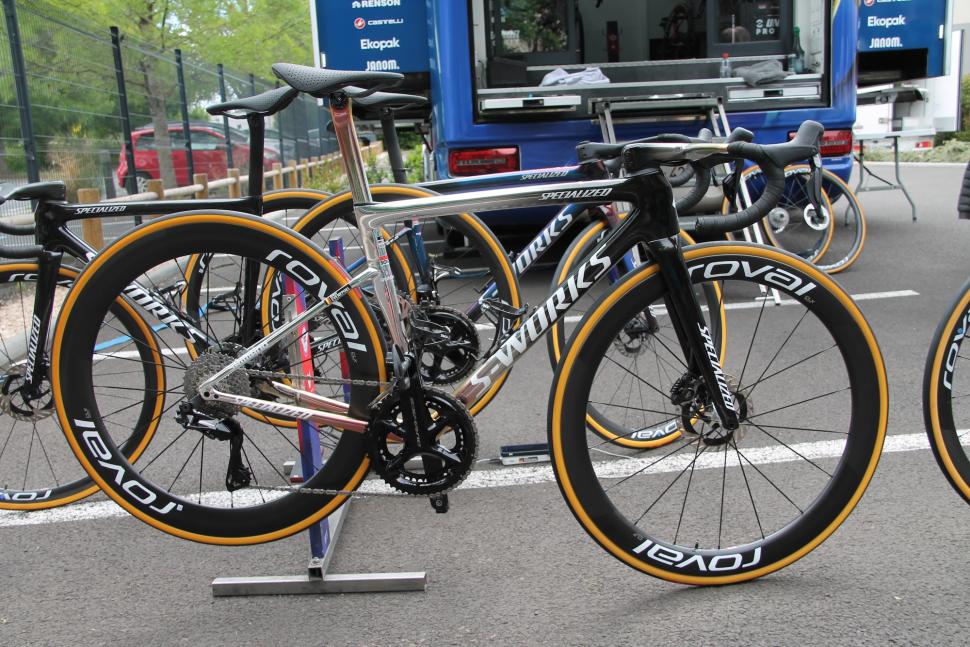


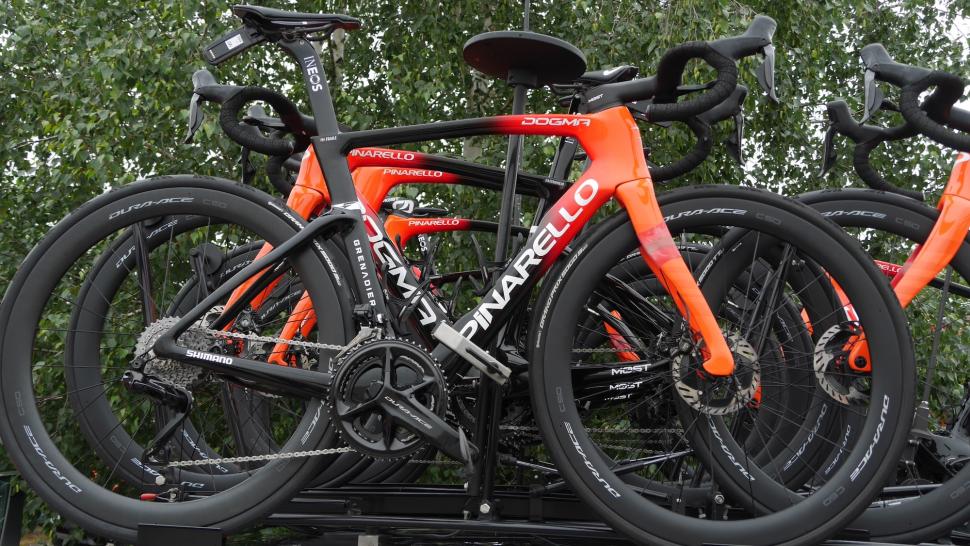



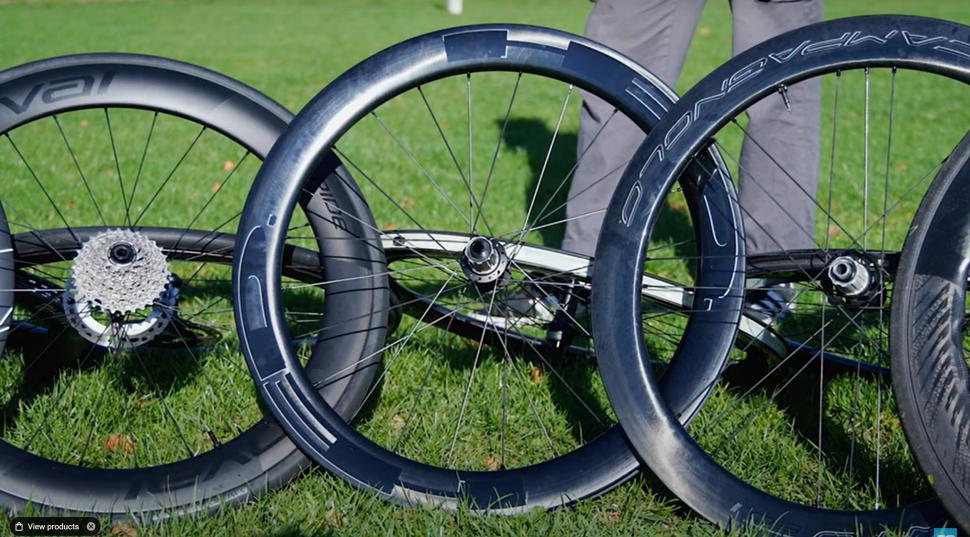

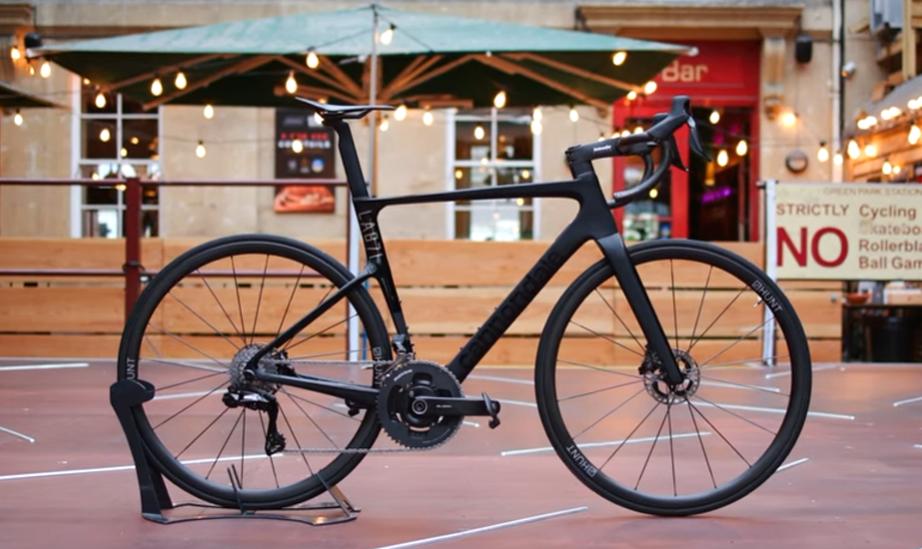
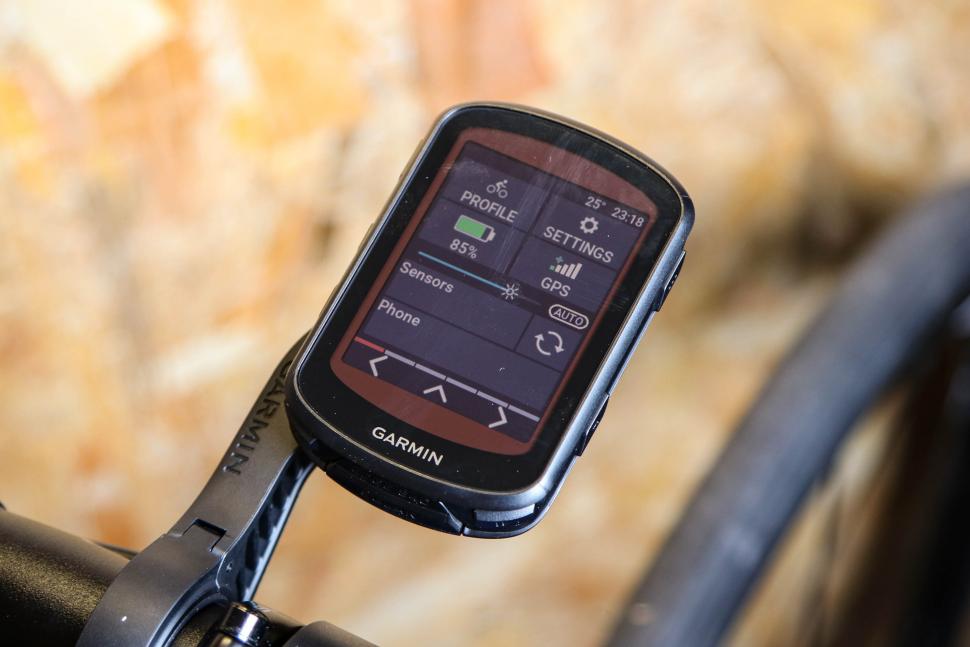
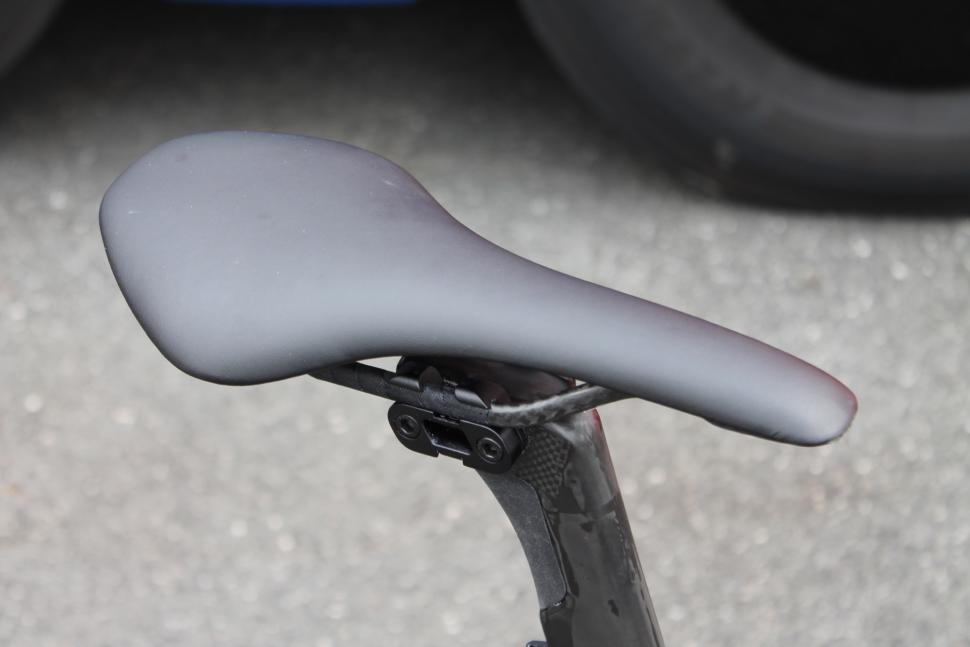
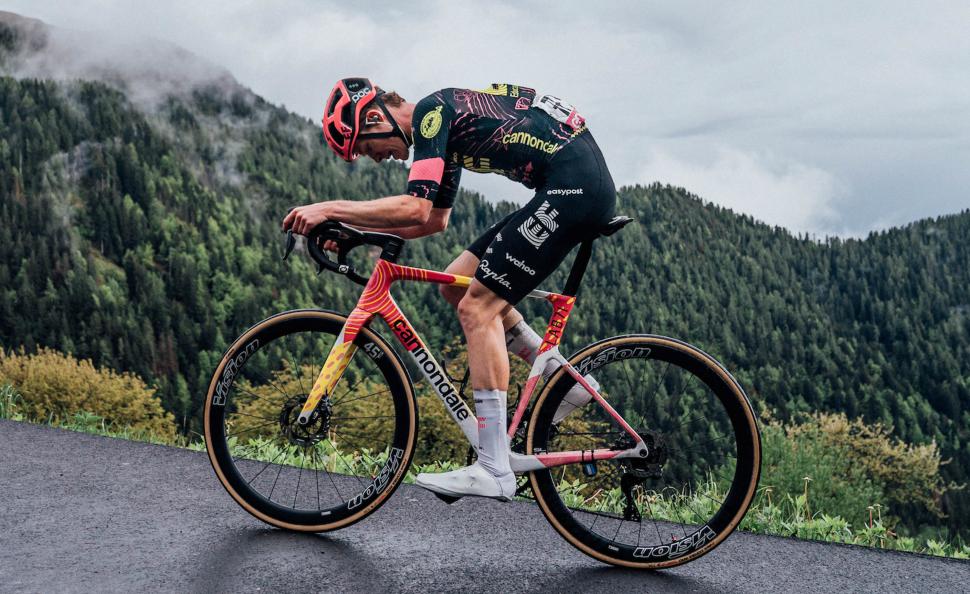
Add new comment
21 comments
Missing item: brake pads. Pros ride on closed roads with other bikes and support cars all moving in same direction. They aim to brake almost never. We have to brake much more so need different heat dissipation and wear life.
Brought home to me after moving from a part of London where I could do an exhilarating 14.2 mile Royal Docks & Isle of Dogs circuit flat out just easing up to arrive at the few traffic lights as they turned green. In SE London, the hills are great but traffic means braking to stop at lights on downhill, double-parked cars, all lead to both slow speed and high speed braking. Nowadays, my old Docklands circuit has gone: tens of thousands of flats with side roads, junctions, traffic lights, bike lanes mean it's now a trundle, not a thrill
Quick reminder:
No cyclist should be buying the top of the range £12k "superbike" road bikes unless money is literally no object (in which case, maybe still buy a middle range bike and give 7 grand to charity...). If you are a good enough rider that the extra couple of percent those top end bikes give you vs a decent middle range bike makes a difference, your sponsors are paying for your bikes. If you think you are good enough but you aren't sponsored and given free bikes...you aren't good enough. Spend the extra money on training or riding holidays or a million other things which will make your riding experience better.
Thanks for the tip.
Lol that reminds me when I was on the train with my bike, just as I was recovering from a bout of Pacreatitis (I went from 11.5 st to 8st in a few months). A roadie sat beside me with his bike and told me, I was better to lose weight from the body than spend on losing it from the bike. I didn't want to get any lighter !
Quick reminder. You dont get to tell someone what they spend their money on whether they are gifted amateur level or fat lad at the back or all the gear but no idea - thats on them - not you.
Well said. End of the day, there are a lot of things more damaging to the environment, both local and global, to spend your spare cash on - expensive holidays, flash motor vehicles etc, and what would one rather share the road with, someone on a £12,000 bicycle or someone in a £100,000 Chelsea tractor? Good luck to anyone who can afford it!
In the world of marketing, it can easily feel like you have to have the best possible bike to enjoy cycling or do well at it. This is 100% not the case and on an article where its basically saying "buy a bike that costs as much as a house deposit so you can be like the pros" its worth having the truth at the bottom.
We see comments all the time that "cycling is getting too expensive" because people feel like they need to buy these bikes and it puts people off even getting involved in cycling.
You are right, it isn't up to me what people do with their money and if they want to waste it on something pointless that makes them feel good then that's definitely their own choice. But there is no way you can argue with a straight face that the ameteur racer or the fat lad at the back *SHOULD* be riding the same bike as MVDP or Pidcock.
I stand by the point that nobody, and I really mean nobody, should buy the top of the range bikes that the pros are being given by their sponsors. They don't make sense for anyone who pays for their own bikes.
No, but I'm not sure that anyone did. On the other hand, you did try to argue that they *SHOULDN'T*, when really it's entirely up to them.
It would probably have been a more interesting article if it had been 'What difference is there really between these TdF wannabe bikes and normal people money bikes, though.
I mean, nobody should buy a watch that costs more than £100 to tell the time, especially as nearly everyone's ability to tell the time is largely the same, yet somehow there is an absolutely enourmous industry devoted to encouraging people to do just that.
At the end of the day, people can buy whatever they like, be that a £12k bike to make them happy about riding around the park, or something else entirely. And buying a bike that's as much as a house deposit does make you more like the pros, by definition, you're riding the same bike as them, that's more like a pro than I am when I'm riding my bike.
I'm also not sure I saw anywhere in the piece stating that you should buy one of these, just that it's an option to if that's what you really want.
On Pidcock bikes: a review of his mountain bike noted that it is far too skittish for all but the most supremely capable bike handler. Similar true for road bikes. The very low aero position is not good for traffic. I've seen a few folk on them and they actually ride slower than me for a variety of reasons of handling and coming to cycling late but with deep wallets (I'm 69 and ride a relatively low and long position and have done so in and around London for 50 years).
I would argue it with a straight face. Who are you to tell someone what they can spend thier money on?
The "fat lad at the back" knows he isn't going to be riding like Pogacar because he paid £12k for a bike, but he likes the bike and the equipment.
Sounds to me more like y9u have a massive chip on your shoulder because you can't afford something and have decided to voice your opinion because for some reason you feel entitled to put down people for thier choices in life. I believe that you should keep these unwanted and unnecessary comments to yourself.
True. But there are more serious reasons for amateur not getting TdF bike. Pro bikes being lower and narrower with short wheelbase makes them skittish - potential safety issue for amateurs especially in traffic or group ride but even solo. Brake pads - pros aim to brake minimally and, with closed roads and other bikes moving in same direction, that's feasible... but not for us, so we need different pads. Lights, tools, pump... lots of stuff we need to take
The brake pads the pros use are not different to the ones everyone uses on Dura-ace bikes. Why would they change them.
What absolute nonsense! Pick a TdF bike and actually compare with it's retail counterpart. Let's say the Scott Foil, as used by Team DSM. The Foil "Ultimate" frame used by the pros has exactly the same geometry as the Foil 105 retail model, with only the carbon type, and layup being different. So same wheelbase, same frame height. As for being "narrower", by which I can only assume you mean the bars, when you buy a bike costing even half what the top models cost from a half decent bike shop, they will give you a proper bike fit and supply bars to suit you based on shoulder width.
There are many here because the place provides a consumer-addict heaven of marketing gush and exciting bikefrocks. They're never going to get beyond their "I can spend my money on wot I like" mindset, despite the amusing fact that they're spending their money on what the advertisers would like them to spend it on then coming up with various rationalisations-after-the-fact to justify "their (ha ha) choice".
But, after all, this makes sense, as their objective isn't to have a better cycling experience but to have a better posing experience. They are what they own and nothing much beyond that.
Here he is again. Needs an insult, reaches straight for something stereotypically female. What would be wrong with a bikefrock, exactly?
Your "I know better than you consumerist sheep" schtick is just as much a pose as anyone spending their own money on something they want, only they're not also showing off that they're a weird old misogynist at the same time.
Something like this?
If you can afford £12k plus associated clothes, computer, second and third bikes for more day to day use, etc, you can, and likely do, give £7k to charity as well as doing pro bono work and help out at food bank etc.
Not me. I could only afford 2nd hand or last season bikes. £1,600 for what had been £3k+ a year before. Clothes from out of season bargain bins.
You do you and everybody else will do them.
You buy what you like/can afford and everybody else will do the same.
If somebody wants to buy a 12K bike and they can afford it, well as far as I'm concerned they can buy it. It's their money, as long as it was obtained legally they are entitled to spend it howver they legally like.
If they want to donate money to charity instead, well that's great too. If they don't want to donate, then so be it.
I don't think any better or worse of any person if they do or don't donate to a charity. Their money, as long as they aren't harming anyone with their spend, then spend it how you wish.
To some people 1600 is an obscene amount of money to spend on a bike, wonder what your reaction would be if somebody told you that you should only spend 500 and donate the rest to charity?